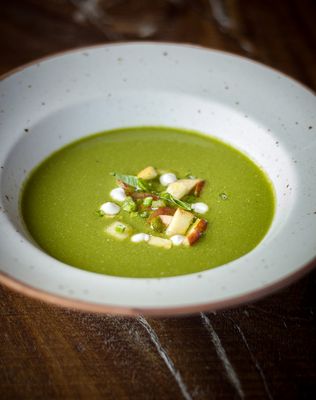The Amazon rainforest has been a keeper of secrets for centuries, holding within its many folds yet-to-be-discovered flora and fauna. A new species is discovered every three days. But it was faeces of the human kind that intrigued Maria Gloria Dominguez-Bello of NYU School of Medicine and a team of researchers when they travelled to the Amazon more than a decade ago. The team visited the village of the Yanomami―a semi-nomadic indigenous tribe that had never been in contact with westerners till then―with the specific purpose of finding poo.
What make the Yanomami poop precious are the secrets it holds about the human microbiome―a brimming community of microbes that thrives in our bodies and determines, among other things, how our immune system reacts to pathogens. That link between the microbiome and immune system probably developed in the gut as it is their favourite hangout. The study published by Dominguez-Bello and Co in 2015 said the Yanomami have the most diverse microbiomes. Microbiome diversity depends on genetics, geography and culture but also on diet. There is little we can do about genetics, geography or culture, so diet is key for a diverse microbiome. And, when she was asked about what food could help the gut microbiome at the Gala Dinner in support of The Microbiota Vault in Singapore, held in June 2022, Dominguez-Bello just had three words. “Fibre, fibre, fibre, she said,” recalls Jose Varkey, corporate mentor chef, CGH Earth. Varkey was the guest chef for the dinner and also a speaker at the event. “We need to constantly feed the gut bacteria,” he said. “But we don’t really feed them. What they need is fibre. But all the processing has removed the fibre from our food.”

They say we are what we eat. But most of what we eat is, as Varkey calls it, “dead food” or “food that bites us back”. What we need is “living food”, like fibre, he says. “Today, food is made according to the convenience of the person who makes it and not really the biological need of the person who eats it,” he says. “Whether it is at home, roadside joint or a five-star hotel, the primary concern is how do we make food that is tasty, and not the nutrition element.”
Varkey cites the example of packaged tomato puree. “What nature put into the tomato is never reaching the gut of the person because what is more important is shelf life, convenience and meeting the acquired taste of today's customer,” he says.

So, at CGH Earth, Varkey came up with conscious cuisine. “There are some 60-odd definitive steps that we follow,” he says. “Jose Dominic (cofounder, CGH Group of Hotels, Resorts and Wellness Centers) said integrity dividend is the only thing that we want, especially with food. Give what is gourmet, healthy and responsible, he said. By gourmet, he meant food that is of the highest quality and by responsible he meant that the food shouldn’t travel much, there should be less carbon footprint; it should be local. It should be beneficial to the community, it should be environment friendly, sustainable. And as much as possible, it should support the local farmers.”
Take, for instance, CGH’s Prakriti Shakti, nestled in the hills of Panchalimedu in Kerala. This premium clinic of natural medicine boasts a fireless kitchen. All you will get here is raw food, but one that is pleasing to the eye, easy on the tummy and a treat for the taste buds. “At Prakriti Shakti, the natural taste, colour, texture, flavour, consistency is more or less kept intact but presented in a very colourful manner,” says Varkey. He and his team have stayed true to Dominic’s philosophy.
But how does one incorporate that philosophy in one’s life? Varkey pulls a few simple tips out of his toque. “Our diet should be 80 per cent alkaline and 20 per cent acidic, but what we eat is just the opposite,” he says. “Everybody knows that we have to have a plant-based diet, but we don't. Even if you do, because of reheating and overheating, it becomes acidic. So, even good vegetarian food becomes negative food if you heat it beyond a limit.”
Food can turn negative right from its source, say, if it is loaded with chemicals. While we cannot do much about the chemicals that are injected into food these days, Varkey says it is essential that we soak and wash store-bought fruits and vegetables in salt or turmeric water. But the most important thing to do, says Varkey, is minimum cooking. By that, he means cooking the vegetables for a shorter duration and preferably only once. He would like you to have the vegetables raw (he usually does), but you can have them with gravy. The gravy can be refrigerated and reheated when required, but not the vegetables. Here’s Varkey’s way of cooking veggies: cut vegetables, add them to the gravy, cook them a bit and done. That is opposite of the current burnt food culture, which Varkey explains thus: you heat up the oil, fry onions, put masala powder, stir it until you get the aroma of the masala and then you start cooking. “You are already killing the food because you have burnt the spices, the onions and heated the oil that was never meant to be heated,” he says. But that means we need to redefine and rework the way we cook food. What it essentially means is, “we must recondition our taste buds,” says Varkey.


